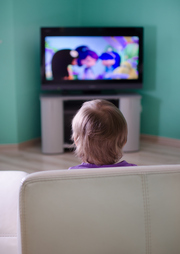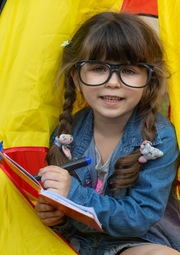In academia, knowledge grows when students and researchers promote or expand on ideas and concepts on a particular subject. Anyone who has ever written an essay or research paper does so by building on the knowledge of those who have gone before them. This is true whether it is recently released information, or decades and even centuries old studies.
However, copying what others have done word for word, or even paraphrasing it in a different arrangement of words serves little purpose. For students and respected scholars, it’s plagiarism and not acceptable in a valid educational system. So, how do you build on the work of a previous writer and add value to the subject without copying them? This is where citing sources becomes essential.
Avoiding Plagiarism by Citing Sources
Citing sources allows you to acknowledge the contributions of others and give credit where it is due, the original source material your are basing your own work on. By doing so, you demonstrate academic integrity and ethical conduct, showing that you have engaged with existing research and built upon it. Secondly, citing sources enhances the credibility and transparency of your own work.
In this guide, we will explore how to properly cite sources to avoid plagiarism and ensure the reader of your essay or research paper learns something new, while maintaining accuracy from reliable sources. Citing must be done whenever you summarize or paraphrase text, or quote information from source materials.
Gather All Necessary Source Information
From the moment you begin researching your chosen subject matter, keep notes of all the information you plan to use to inspire your own thoughts and ideas. These are the citation details you’ll need to include in your final paper. They include titles, author names, publication dates, page numbers and websites. Anything that would allow readers to easily fact check your work will ensure you avoid passing on the work of others as your your own. These source details will vary depending on the format, such as a book, a journal, or website.
To be as original as possible in your writing, you need to learn the subject well. This way you can write as much as possible in your own words, while still verifying the source behind your learned knowledge in specific areas. It’s ok to quote someone word for word as long as you put it in quotation marks and give credit to your source.
Choose the Appropriate Citation Style.
There are a number of citation styles that are available for use. The most common three are APA Style, MLA Style, and Chicago Style. They are as follows;
How to Cite Sources in APA Style
APA stands for American Psychological Association. Therefore, this style is mainly used in the social sciences, such as psychology, anthropology, and sociology. It’s also commonly used in education. The citing focus is authors and dates. It includes a reference list at the end of the paper and in-text citations within the body of the text. APA style also includes specific formatting guidelines for headings, margins, and page numbers.
How to Cite Sources in MLA Style
MLA stands for Modern Language Association. It’s commonly used in the study of humanities, such as literature, language, and cultural studies. The MLA format makes it easy for readers of the work to find the associated source references. There are specific guidelines for formatting headings, margins, and page numbers. Citing consists of author name, title, publication information, and format. In-text citations include author’s surname and page number of the referring source.
How to Cite Sources in Chicago Style
Chicago is a documentation style that has been published by the Chicago University Press since 1906. It is mainly used in history, literature, and the arts. It offers two different citation systems. They are;
- Notes and bibliography is more often used in humanities disciplines. Footnotes or endnotes are used to cite sources, and a separate bibliography is included at the end of the paper.
- The author-date system is more common in social sciences and sciences. This this system in-text citations are used, and a reference list is included at the end of the paper.
The choice of which system to use is up to the author in accordance with what suits the field of study and the requirements.
Citing Sources Explained
This video explains what the citing of sources is and why it’s important.
Examples of Different Citation Styles
Here are samples of the three main styles of citing sources.
Book citation in APA style
– Author: Rogers, M.
– Year of publication: 2022.
– Title: How to Write a Book.
– City of publication: Denver, CO.
– Publisher: Fluent Publishing.
APA in-text citation: (Rogers, 2022) or Rogers (2022) states that…
APA reference list entry: Rogers, M. (2022). How to Write a Book. Denver, CO: Fluent Publishing.
Journal article citation in MLA style:
– Author: Johnson, A.
– Year of publication: 2019.
– Title of article: The Impact of Climate Change.
– Title of journal: Environmental Studies.
– Volume number: 10.
– Issue number: 2.
– Page range: 25-42.
MLA in-text citation: (Johnson 30) or Johnson states that…
MLA works cited entry: Johnson, A. “The Impact of Climate Change.” Environmental Studies, vol. 10, no. 2, 2019, pp. 25-42.
Website citation in Chicago style:
– Author (if available): Brown, K.
– Title of webpage: The History of Jazz.
– Website name: Music World.
– Date of publication or update: March 15, 2021.
– URL: www.musicworld.com/jazz-history.
Chicago in-text citation: (Brown, Music World).
Chicago bibliography entry: Brown, K. “The History of Jazz.” Music World. Accessed March 15, 2021. www.musicworld.com/jazz-history.
Double Check Your Citations for Accuracy

As soon as you have completed your paper you no doubt will feel great relief and even joy that your work. But it’s too early to jump for joy. Take a break and then go back and check all your citations for accuracy. A simple mistake in a source’s name, date or website URL will make it difficult for others to fact check your research.
Avoiding Common Mistakes
Mixing different citation styles can confuse readers and make your citations appear inconsistent and unreliable. When paraphrasing or summarizing ideas from a source, ensure that you rephrase the information in your own words and provide proper citation. Failing to do so can lead to unintentional plagiarism. Knowing what to cite and what not to cite should also be considered. while it is essential to cite sources for specific facts, ideas, or arguments, common knowledge does not require citation. Use your judgment to determine what constitutes common knowledge.
Tips for Paraphrasing and Summarizing
Paraphrasing and summarizing are essential skills for effectively incorporating information from sources into your essays and research papers. Here are some tips to help you paraphrase and summarize effectively:
- Understand the original source: Before paraphrasing or summarizing, make sure you have a clear understanding of the original source. Read the text carefully and identify the main ideas and key points.
- Write from Scratch: When you understand the subject matter, you can write in your own words. If you can understand it the concepts involved, then you can ensure you are conveying the original meaning.
- Focus on the main ideas: When summarizing, condense the original text by focusing on the main ideas and key points. Leave out minor details and examples unless they are crucial to your argument.
- Attribute the source: Even when paraphrasing or summarizing, it is essential to provide proper attribution to the original source. Include an in-text citation and add the source to your reference list.
- Compare your paraphrase or summary to the original: After paraphrasing or summarizing, compare your version to the original source. Make sure you have accurately represented the author’s ideas and have not unintentionally plagiarized.
By following these tips, you can effectively incorporate information from sources into your research papers while maintaining academic integrity and avoiding plagiarism.










